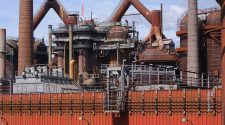RosRAO, a subsidiary of Russian atomic titan Rosatom, is among the three organizations chose to assemble a framework to channel radioactive tritium out of the polluted water gathered at the stricken force plant – an undertaking that has so far challenged specialists.
Fukushima Daiichi administrator TEPCO, which has depended on raising a great many water tanks to contain the lethal run-off from the plant, is now trialing a framework that channels 62 radioactive materials.
Anyhow the Advanced Liquid Processing System (ALPS) does not channel tritium, a gently radioactive side effect of atomic era, which regardless implies that water can’t be securely released into the Pacific Ocean.

Rosrao, which was based on the establishments of Soviet-time waste transfer research organizations, won the TEPCO delicate for a filtration framework – close by US firm Kurion Inc, and GE Hitachi Canada, a joint extend between the Japanese and US companies – beating 26 different organizations.
Each of the three builders will be given 1 billion yen – about $9.5 million – to present a working channel model by the March 2016 due date, and the last estimation of the agreement, which could keep going for quite a long time, could run into several million dollars.
“We are putting forth an extraordinary consolidated sifting innovation, dissimilar to our Western partners, which permits it to be more cost-proficient,” said venture administrator Sergey Florya in a meeting with RIA Novosti news organization.
The authority included that the level of tritium in Fukushima water is 10,000 times higher than the standard permitted by the WHO.
TEPCO confronts an expected bill of over $105 billion to clear up the outcomes of the quake and torrent that brought on various meltdowns at the somewhat outdated plant in March 2011.
While all reactors have been balanced out, cooling water transfer has been a prime issue. The multi-nuclide evacuation supplies, called ALPS (progressed fluid handling framework) was introduced in March 2013, yet its utilitarian value has been hampered by issues, for example, channel consumption, spills, administrator mistakes and configuration blemishes, which have constrained consistent shutdowns.
At one point its channels were neglecting to purify the water whatsoever, notwithstanding purportedly functioning as outlined.
Right up ’til today, ALPS stays in “trial mode”, regardless of the legislature requesting a $150 million development to the framework, probably planned to start working in October.
Most recent detail demonstrate that there are as of now 367,000 tons of sullied water, put away in tanks inside the Fukushima Daiichi atomic force plant.












